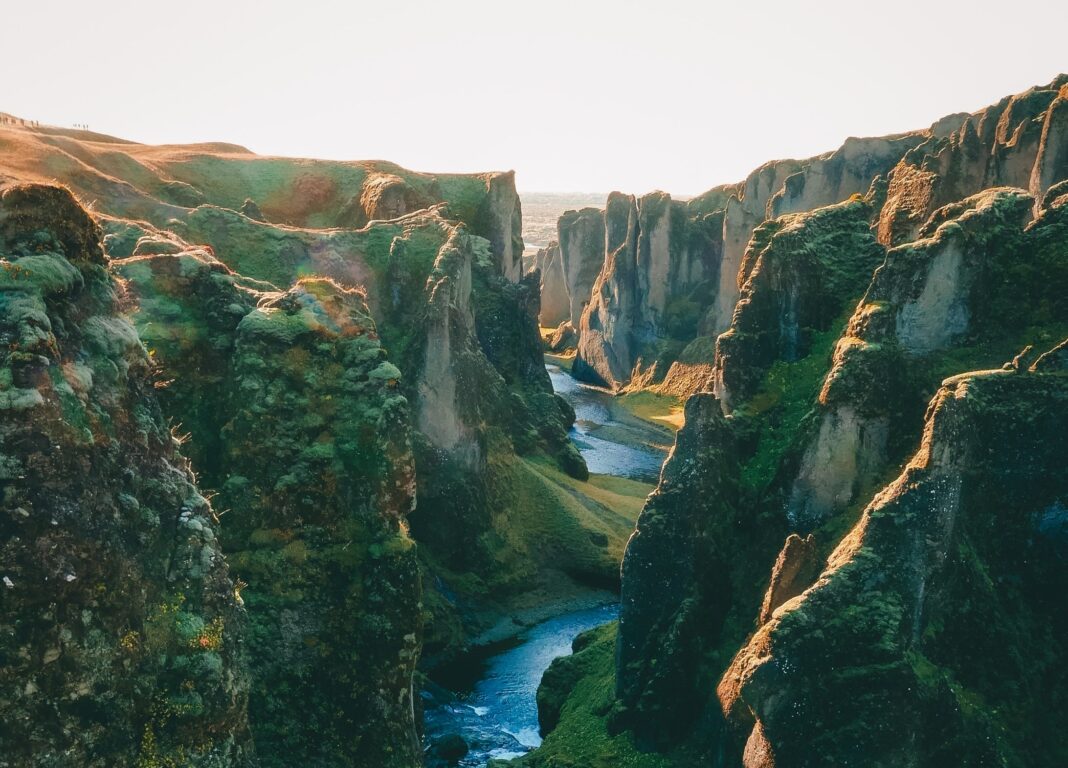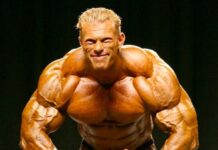Photo: Samantha Oakey on Unsplash
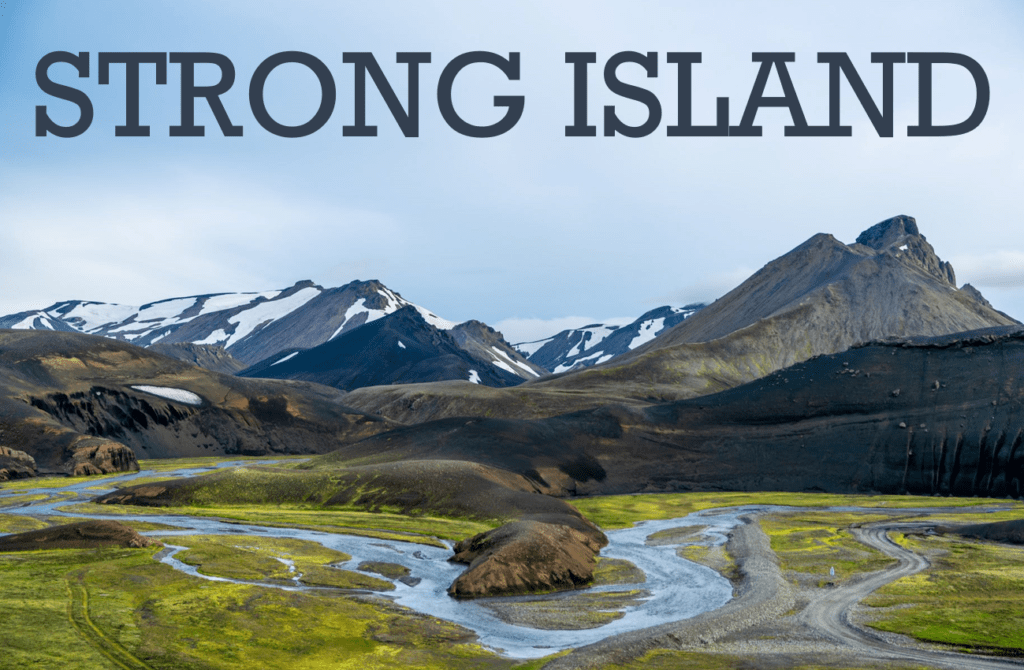
Jamaica makes sprinters. Kenya makes marathoners. And Iceland makes strongmen. Of the merely 360,000 Iceland citizens, a remarkable number can lift very heavy things. Three Icelanders have, collectively, won nine of the 45 World’s Strongest Man championships. This is topped only by the 12 titles secured by Americans, but the U.S.A. is nearly 100 times more populous than the “Land of Fire and Ice.” What gives? Is it Viking genes? All those volcanic boulders for hoisting? Fermented shark meat? Why is this barely occupied outpost in the North Atlantic lifting way, way out of its weight class?
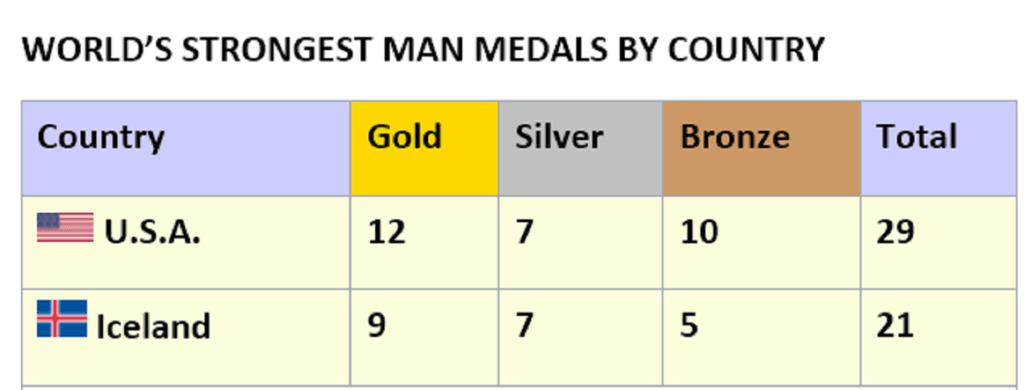
ICELAND STRONGMAN GENES
Icelanders rank high on the world height scale. The average Icelandic male is 5’11” (180 cm.), two inches taller than the average American man. A larger frame can hold more muscle for carrying stones and flipping tires, and in an elongated population you’re more likely to grow a “Mountain,” like 6’9” Hafþór Björnsson. Iceland was isolated for much of its history. Can DNA explain the bigger bones (and muscles)?
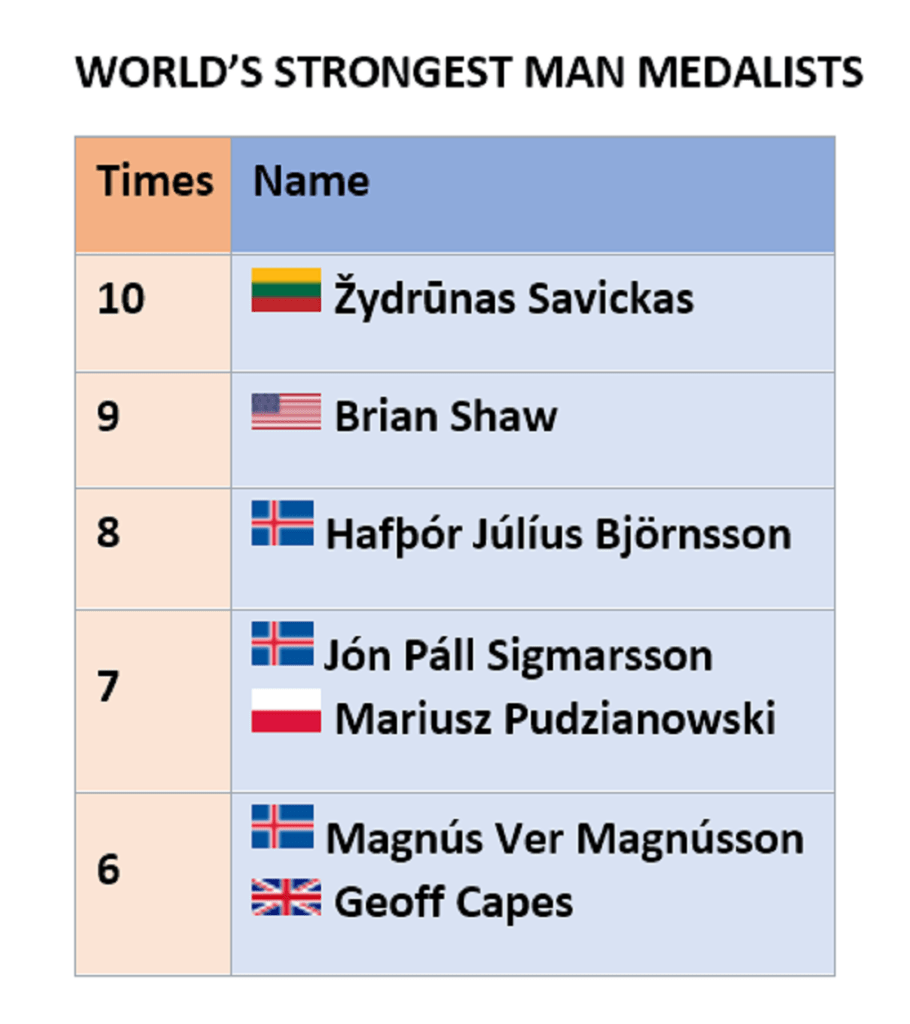
“I am the strongest! I am the Viking!” the late Icelandic strongman Jón Páll Sigmarsson shouted upon winning the second of his four World’s Strongest Man titles. We romanticize Vikings (see TV’s The Vikings), and Iceland was indeed emigrated, circa 800, by Norse Vikings (and their slaves from the British Isles). Most Icelanders can still trace ancestors to the Northern European continent.
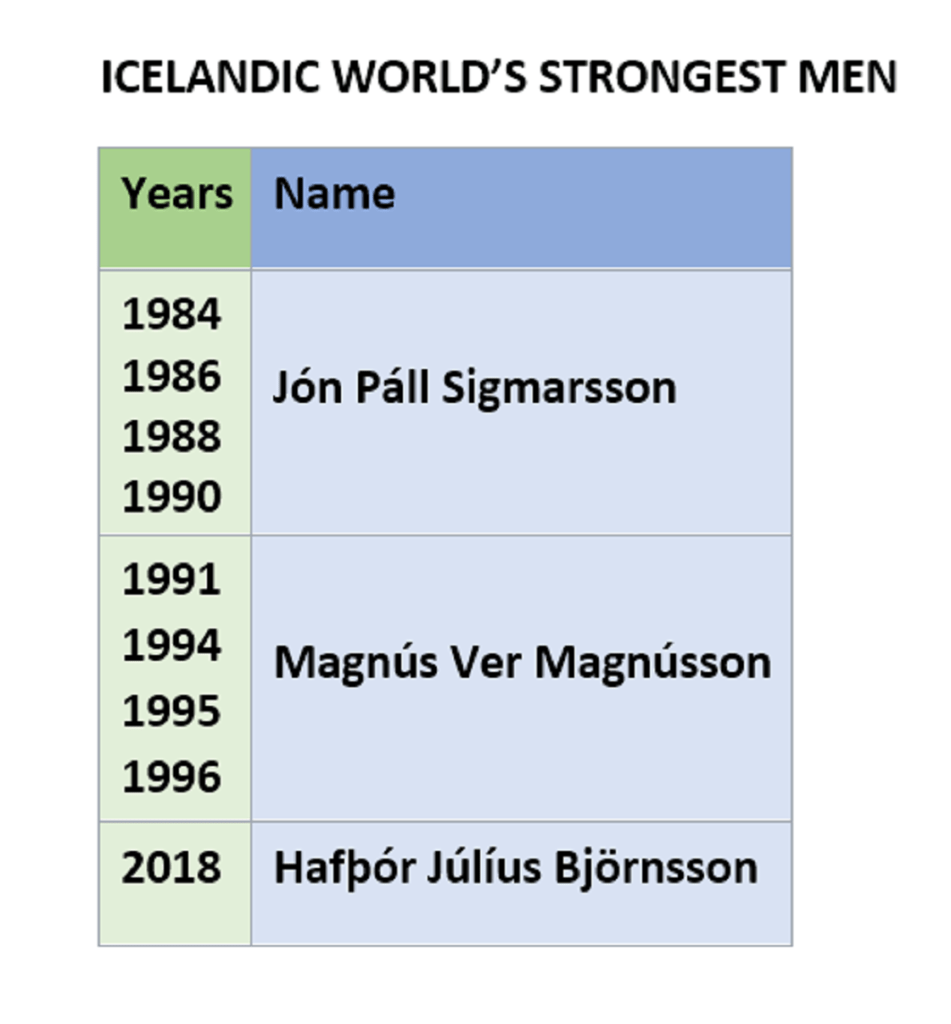
But if someone was descended from a Viking, what would that mean? Norsemen 1200 years ago averaged 5’6” (172 cm.), short for our era, average in theirs. Even if the largest and strongest men went off pillaging (Vikings being Vikings), Iceland was founded mostly by Norse farmers.
Forget the bearded brutes of yore, and fast-forward to the present. The average Norwegian man, at nearly 6’ (182.4 cm.), is even taller than today’s Icelanders, and all of the top ten tallest countries are in Northern or Eastern Europe. The Dutch are the tallest, and a 2015 study proposes natural selection is a reason in this: Because height is a desirable quality, people select taller mates.
Natural selection his likely been a factor in Iceland, as well. Heartiness has always been vital for surviving harsh winters, and as size and strength became Icelandic stereotypes, taller, stronger “Vikings” had and continue to have more opportunities to pass on their genes than smaller, weaker people.
ICELAND STRONGMAN DIET
“I don’t know what those Icelanders are eating, but I need to go over there and try some of that,” American O.D. Wilson said after losing the 1990 World’s Strongest Man to Sigmarsson by a frustrating half-point. The answer: lots of dairy, meat, and fish.
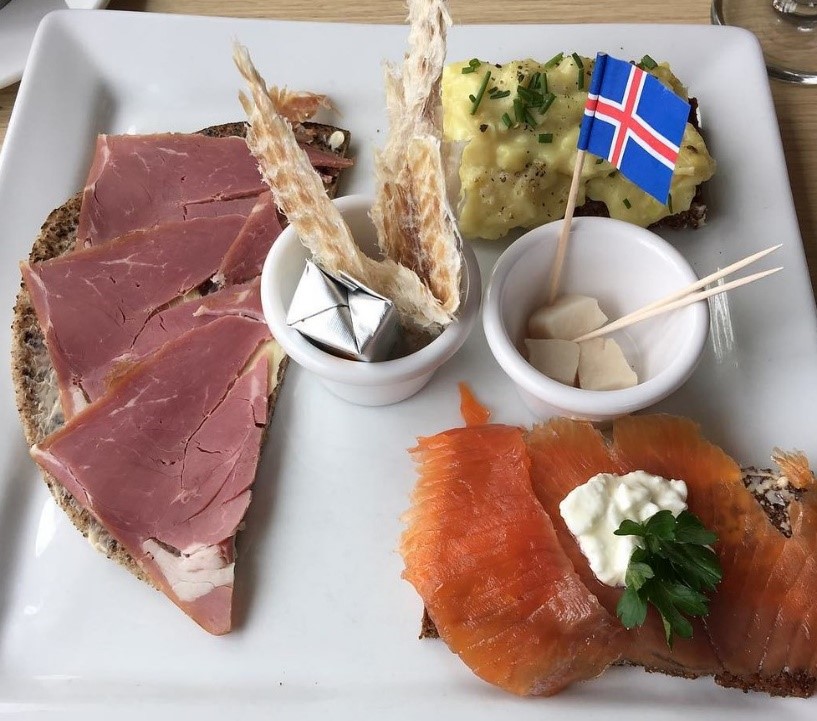
Traditional Icelandic foods include skyr (yogurt-like cheese), lamb, seabirds and their eggs, rye bread, and a wide variety of fish, most of which is eaten fresh. (But not all of it. The late Anthony Bourdain, an adventurous epicure, called Iceland’s fermented shark meat, hákarl, “the single worst, most disgusting and terrible tasting thing.”) The average Icelander consumes about 100 gallons of (hormone-free) dairy per year, much of it in skyr form. That’s a lot of whey to grow on.
The focus on fresh, natural ingredients and scarcity of processing, sugar, and white flour no doubt contributes to Icelandic healthiness (low pollution and an emphasis on childhood fitness are two others factors). In the 2019 Bloomberg healthiest countries index, Iceland ranked third, while the United States was thirty-fifth.
ICELAND STRONGMAN TRAINING
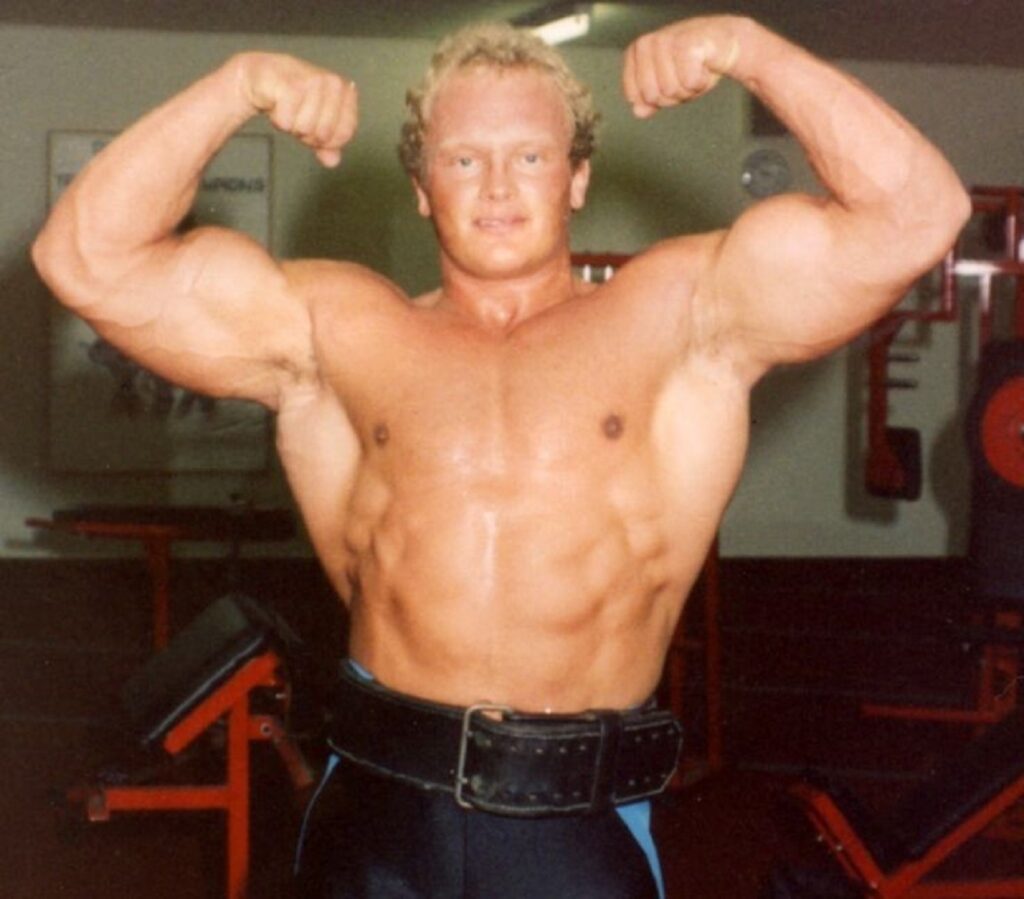
Google “best Icelandic athletes,” and of the first four people who appear, the three males are Iceland’s trio of World’s Strongest Men and the woman is a yoked CrossFit champ. (Iceland’s Anníe Mist Þórisdóttir and Katrín Davíðsdóttir have both won the women’s CrossFit world title twice.) Between 1984 and 1996, Jón Páll Sigmarsson and Magnús Ver Magnússon won eight W.S.M. championships (and were second or third the other years), a remarkable string of dominance. National pride swelled. Strongmania swept Iceland. The 1992 W.S.M. was held in Iceland. Even local contests were broadcast in prime time. Aflraunir—tests of strength and muscular endurance—remains, in effect, Iceland’s national sport.
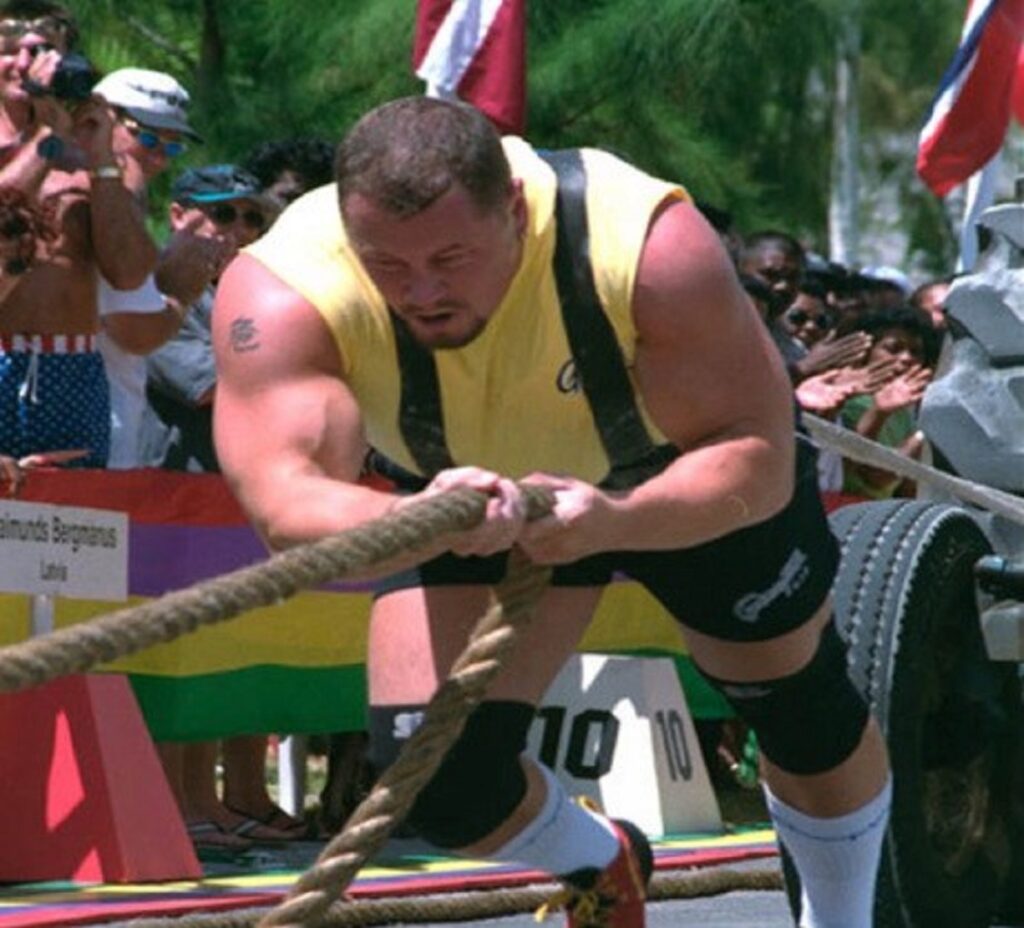
In the early years of the World’s Strongest Man, the most successful competitors were powerlifters. Both Sigmarsson and Ver Magnússon were European powerlifting champs, and their workouts were heavy on squats, bench presses, and deadlifts. But after winning his first W.S.M. title in 1991, Ver Magnússon trained exclusively for W.S.M. Since then, Icelanders have developed a support system of strongman and CrossFit gyms, equipment, coaches, and enthusiasts to breed new generations of specialized aflraunir athletes.
A former basketball player (and never a powerlifter), Hafþór Júlíus Björnsson took up strongman training at 20 after meeting Ver Magnússon, who spotted potential in the towering but still lanky youth and began coaching him in his dungeon-like Reykjavik gym, Jakaból. “In two years, he will be really good,” Ver Magnússon presciently predicted in 2010. And in 2012, Björnsson was third in the World’s Strongest Man, his first of eight consecutive W.S.M. medals (coupled with his fame as the Mountain on Game of Thrones), doubtless inspiring another generation of Icelandic strongmen. And so it goes.
ICELAND: THE STRONG PLACE
The sun retreats soon after emerging in December but hangs around almost all day in July. It’s consistently cold and rarely even warm, with averages of 32 F (0 C) in the bleakest days of winter and 52 F (11 C) in the heart of summer. The strength of nature itself—geothermal and hydroelectric energy—powers the entire island. Any of its thirty-one active volcanoes may erupt at any moment. Cragged with dried lava, three-quarters of it is barren of vegetation. Only hard things grow in hard places.
Because of its isolation, climate, and terrain, ruggedness has long been revered in Iceland. Goliaths were mythologized. For centuries, men tested themselves by hoisting and carrying boulders. Even the washerwomen who hauled great loads great distances were venerated. Strength is woven into the national fiber of this cruel and beautiful rock.
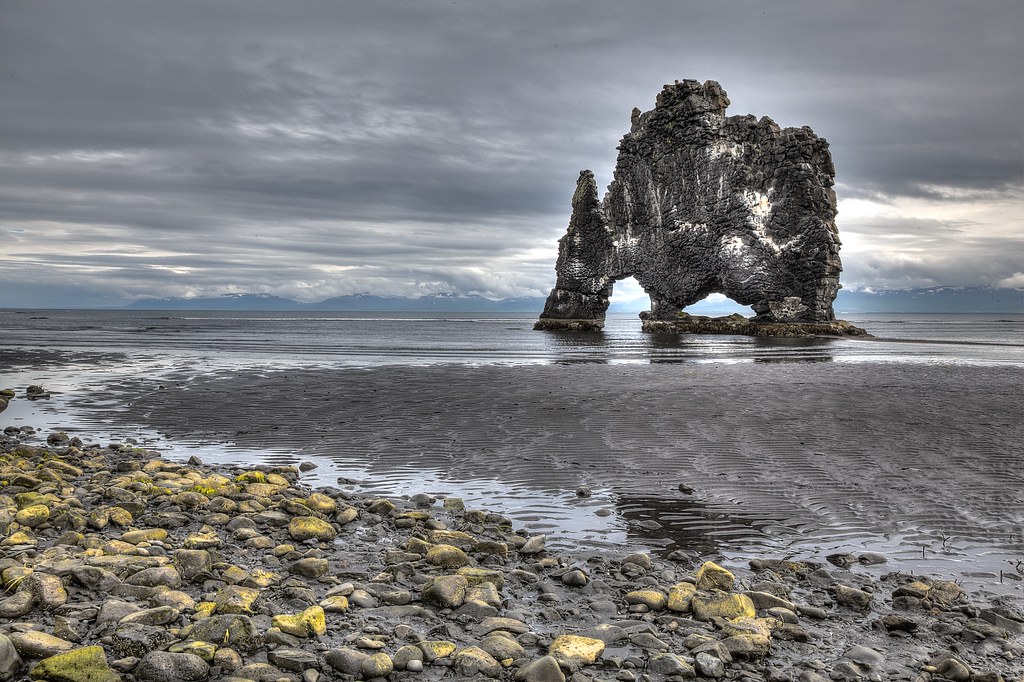
Maybe if Magnús Ver Magnússon had been born in Australia he would’ve been a rugby forward, and maybe if Hafþór Júlíus Björnsson had grown up in America he’d be protecting a quarterback’s blind side. But in their native Iceland, they’re exactly who they should be. They are giants amongst mere men, legends amongst mere mortals. They are strongmen on an island that exalts strength. They are the last Vikings.
More Strongman content:
5 Things to know about Martins Licis
12K CALORIES: What Brian Shaw eats in a typical day



































